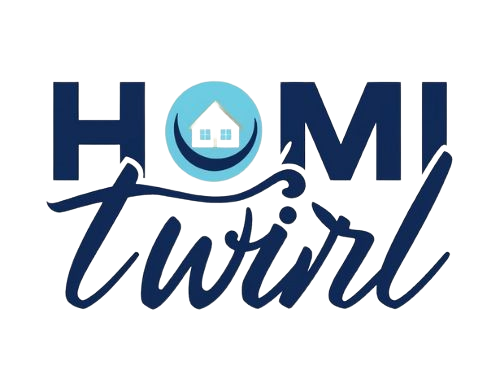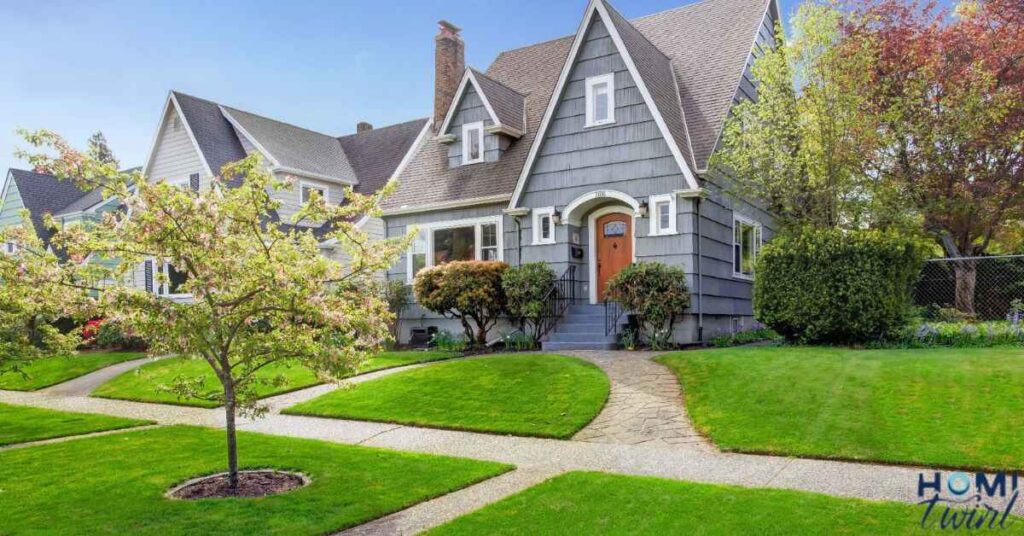Creating a picture-perfect home landscape involves strategic planning and attention to detail. This guide provides essential tips to transform your outdoor space into a harmonious extension of your home.
Begin by assessing your yard’s layout and characteristics, considering factors like size, shape, and existing features. Design elements should complement your home’s architecture and local climate, integrating sustainable practices for minimal upkeep.
Incorporate hardscaping and select plants that offer year-round appeal, ensuring a visually stunning and functional outdoor environment.
Tip 1: Get to Know Your Yard Inside Out
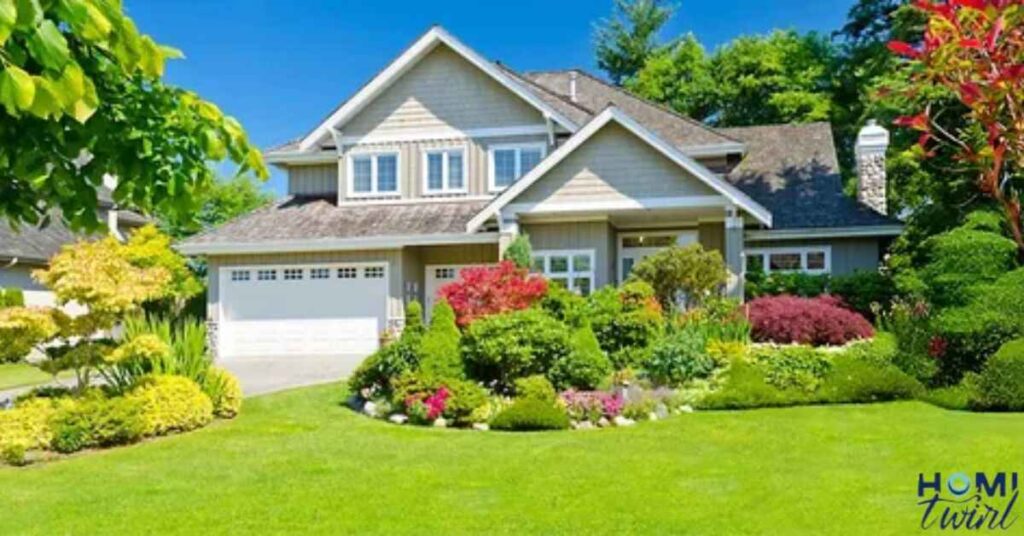
Before you grab that shovel, take a moment to really understand your outdoor canvas. This first step in home landscaping is crucial for creating a sustainable and stunning landscape design.
Read This Blog: HOW TO KEEP GARAGE DOOR OPENERS SAFE
Take a Walk on the Wild Side
Start by assessing your yard’s current state. Put on your detective hat and look for it.
- Sunny spots perfect for sun-loving plants
- Shady areas ideal for ferns and hostas
- Drainage issues that need addressing
- Existing plants worth keeping
Don’t forget to identify those hidden gems – maybe there’s a beautiful old tree that could become a focal point in your landscape design.
Your Home’s Personality Matters
Your house isn’t just a backdrop; it’s a key player in your landscape design. Consider.
- Architectural style (Is it modern? Colonial? Craftsman?)
- Color scheme
- Materials used (brick, wood, stone)
Pro tip: Your landscape should complement your home, not compete with it. For instance, a formal English garden might look out of place next to a sleek, modern home.
Mother Nature’s Rulebook
Understanding your local climate and growing conditions is crucial for successful landscaping. Here’s what to consider.
- USDA hardiness zone
- Annual rainfall
- Typical temperatures throughout the year
- Sun exposure in different areas of your yard
Don’t skip the soil test! It’ll tell you what nutrients your soil has (or lacks) and its pH level. This info is gold when it comes to choosing the right plants and amendments.
Tip 2: Dream It, Plan It, Make It Happen

Now that you’ve got the lay of the land, it’s time to put your landscape design principles into action.
Sketch Your Green Dream
Grab a piece of paper and start sketching. Don’t worry if you’re not Picasso – a basic layout will do. Consider.
- Traffic flow: How will people move through the space?
- Outdoor living areas: Where will you relax, entertain, or dine?
- Views: What do you want to highlight or hide?
The Perfect Match: Plants and Materials
Choosing a cohesive plant palette is key to a polished look. Think about it.
- Color scheme: Do you want bold and vibrant or soft and soothing?
- Texture: Mix fine-textured plants with bolder ones for interest
- Form: Combine upright, spreading, and cascading shapes
For hardscaping, select materials that complement your home’s architecture. A rustic flagstone patio might look great with a cottage-style home, while sleek concrete pavers could be perfect for a modern abode.
First Impressions Count
Your front yard is your home’s handshake – make it count! Here are some front yard landscaping ideas.
- Frame your entrance with symmetrical plantings
- Create a welcoming path to your front door
- Use a mix of evergreen and deciduous plants for year-round interest
Focal Points: The Secret Sauce
Every great landscape has elements that catch the eye. Consider.
Also Read This Blog: EFFECTIVE STRATEGIES FOR REMOVING CARPET STAINS
- A stunning specimen tree
- A water feature
- An artistic sculpture
- A cozy seating area
Use repetition of these focal points to create a sense of cohesion throughout your landscape.
Tip 3: Play Matchmaker with Your Plants
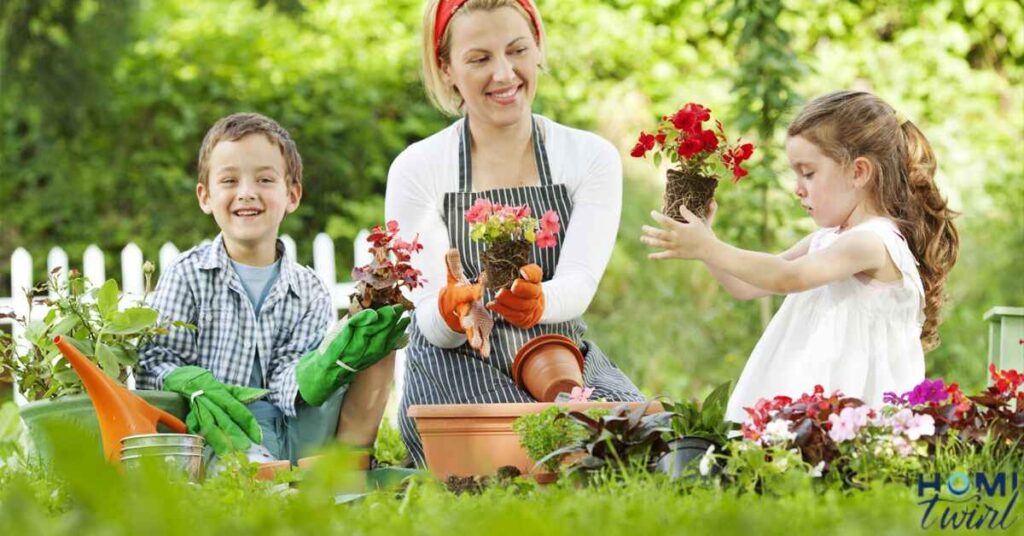
Choosing the right plants is like assembling a great team – each member has its strengths and plays well with others.
Green Thumb 101: Picking the Right Plants
When it comes to plant selection, consider.
- Native plants: They’re adapted to your local climate and often require less maintenance
- Exotic species: Can add unique interest but may need more care
- Growth habits: Will that cute little shrub turn into a monster in a few years?
- Maintenance needs: Be honest about how much time you want to spend pruning and watering.
Location, Location, Location
Grouping plants with similar needs makes for a healthier, easier-to-maintain landscape. Think about it.
- Sun exposure
- Water requirements
- Soil preferences
You can also use plants to solve landscape problems.
- Tall grasses for privacy
- Ground covers for erosion control
- Shade trees to cool your home
The Art of Plant Harmony
Creating visual interest is all about balance. Mix it up with.
- Colors: Use the color wheel as your guide
- Textures: Combine fine, medium, and coarse textures
- Forms: Mix upright, rounded, and spreading shapes
Don’t forget about seasonal interest. Choose plants that shine in different seasons for a landscape that looks great year-round.
Tip 4: Hardscaping: The Backbone of Your Landscape
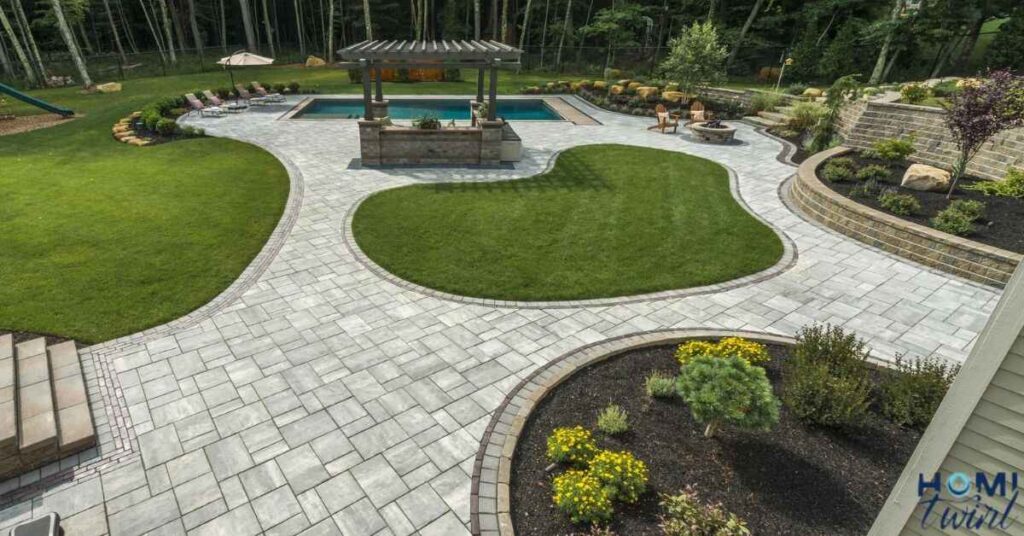
Hardscaping provides structure and functionality to your outdoor living environment. Let’s explore some hardscape design ideas.
Pave the Way
Paths and patios are the highways and destinations of your landscape. Consider.
- Materials: Brick, stone, concrete pavers, gravel
- Patterns: Herringbone, basketweave, running bond
- Edges: Crisp and formal or soft and natural
Table: Paving Material Comparison
| Material | Pros | Cons |
| Brick | Durable, classic look | Can be expensive |
| Concrete pavers | Affordable, many styles | May settle over time |
| Natural stone | Unique, high-end look | Costly, can be slippery when wet |
| Gravel | Inexpensive, permeable | Can scatter, not ideal for snow removal |
Privacy, Please
Fences and screens can create intimate spaces and block unsightly views. Try.
- Living walls of plants
- Decorative panels
- Trellises with climbing vines
Outdoor Living at Its Finest
Structures like gazebos and pergolas can transform your yard into an outdoor room. They provide.
- Shade
- A sense of enclosure
- Support for climbing plants
Level Up Your Landscape
If your yard isn’t flat, embrace it! Use decks and terraces too.
- Create usable space on slopes
- Add visual interest
- Improve drainage
The Grand Entrance
Your driveway and front walkway set the tone for your entire landscape. Make them count with.
- Interesting materials and patterns
- Gentle curves (where appropriate)
- Plantings that soften hard edges
Tip 5: Keep It Looking Sharp
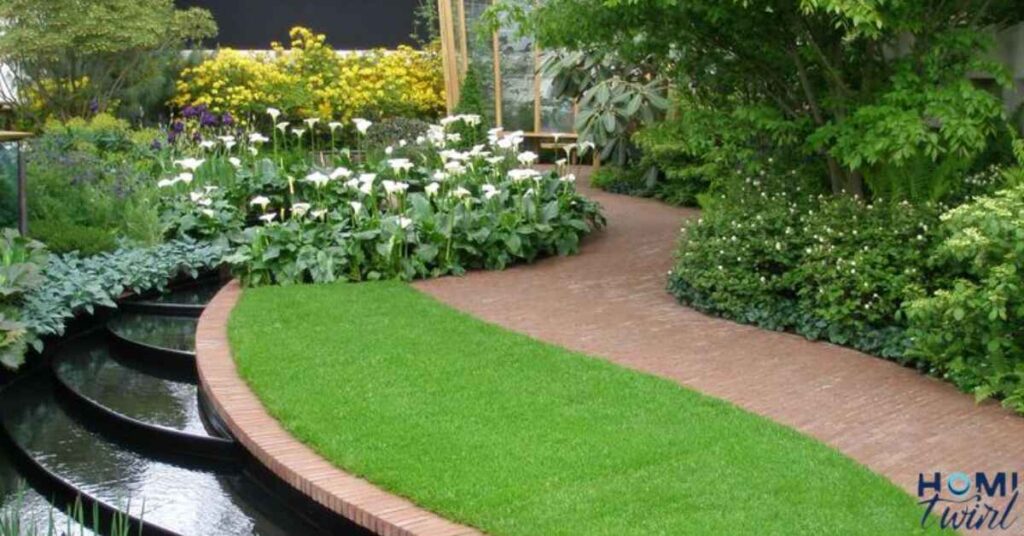
A beautiful landscape needs regular TLC to stay picture-perfect.
Your Landscape’s To-Do List
Create a maintenance schedule that includes.
- Spring: Clean-up, mulching, planting
- Summer: Watering, deadheading, pruning
- Fall: Leaf removal, planting bulbs, winterizing
- Winter: Pruning dormant trees and shrubs, planning for next year
Prune Like a Pro
Proper pruning keeps plants healthy and shapely. Remember.
- Prune spring-flowering shrubs right after they bloom
- Prune summer-flowering shrubs in late winter or early spring
- Always use clean, sharp tools
Troubleshooting 101
Keep an eye out for common problems.
- Pests: Look for chewed leaves, sticky residue, or visible insects
- Diseases: Watch for spots on leaves, wilting, or unusual growth
- Nutrient deficiencies: Yellowing leaves often indicate a lack of nutrients
Mulch Magic
Mulch is a landscaper’s best friend. It.
- Retains soil moisture
- Suppresses weeds
- Regulates soil temperature
- Adds a finishing touch to beds
Apply 2-3 inches of organic mulch around plants, but keep it away from tree trunks and plant stems.
Tip 6: Let There Be Light (and Water)
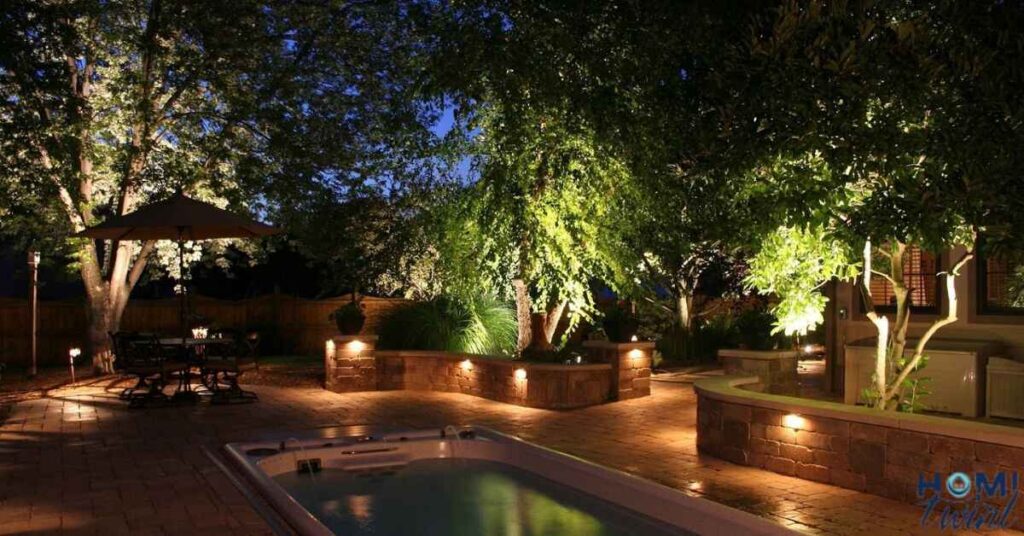
The right lighting and irrigation can take your landscape from good to great.
Set the Mood with Landscape Lighting
Outdoor lighting serves multiple purposes.
- Safety: Illuminating paths and steps
- Security: Deterring intruders
- Aesthetics: Highlighting landscape features
Try a mix of lighting types.
- Path lights
- Uplights for trees and architectural features
- Downlights for gentle overall illumination
Quench Your Garden’s Thirst
Efficient irrigation is key to a healthy landscape. Options include.
- Drip irrigation: Great for beds and individual plants
- Sprinkler systems: Best for lawns
- Smart controllers: Adjust watering based on weather conditions
Remember, deep, infrequent watering encourages deep root growth and drought tolerance.
Tip 7: Go Green with Eco-Friendly Practices

Sustainable landscaping isn’t just good for the planet – it’s easier on your wallet and schedule too.
Embrace Your Roots
Native plants are the superstars of eco-friendly landscaping.
- Require less water and fertilizer
- Provide food and habitat for local wildlife
- Create a sense of place
Less Lawn, More Fun
Consider reducing your lawn area. Instead,
- Wildflower meadows
- Groundcover plants
- Ornamental grasses
When It Rains, It Stores
Rain gardens are a beautiful way to manage stormwater.
- Reduce runoff
- Filter pollutants
- Provide habitat for birds and butterflies
Hardscaping with a Soft Touch
Permeable materials allow water to soak into the ground. Options include.
- Pervious concrete
- Permeable pavers
- Gravel
Waste Not, Want Not
Turn yard waste into garden gold.
- Compost leaves and grass clippings
- Use fallen branches as natural borders or garden art
- Chip pruned branches for mulch
Chemical-Free Zone
Ditch the synthetic stuff and go organic.
- Use compost to improve soil
- Encourage beneficial insects for pest control
- Choose disease-resistant plant varieties
Every Drop Counts
Conserve water with smart practices.
- Group plants with similar water needs
- Use drought-tolerant plants in dry areas
- Collect rainwater for irrigation
Invite Nature to Your Backyard
Create a wildlife-friendly landscape.
- Plant nectar-rich flowers for pollinators
- Provide water sources like birdbaths
- Leave some areas “wild” for creature habitats
By following these landscaping tips, you’ll be well on your way to creating a picture-perfect home landscape that’s not only beautiful but also sustainable and low-maintenance. Remember, Rome wasn’t built in a day – take your time, enjoy the process, and watch your outdoor oasis come to life. Happy landscaping.
Bringing It All Together: Your Picture-Perfect Landscape
Now that we’ve explored our 7 expert landscaping tips, let’s talk about how to weave them into a cohesive, stunning outdoor space that’ll make your neighbors green with envy.
The Power of a Master Plan
Before you start digging or planting, it’s crucial to have a solid master plan. This blueprint for your landscape should.
- Incorporate all the elements we’ve discussed
- Allow for phased implementation if you’re working on a budget
- Consider future needs (like play areas for kids or an outdoor kitchen)
Remember, a well-thought-out plan can save you time, money, and headaches down the road.
Balancing Act: Hardscape and Softscape
The key to a picture-perfect landscape is striking the right balance between hardscape (non-living elements) and softscape (plants and natural elements). Here’s a quick guide:
- Aim for a 60/40 or 70/30 ratio of softscape to hardscape
- Use hardscaping to create structure and define spaces
- Let plants soften edges and add life to your design
Pro tip: In smaller yards, consider vertical gardening to maximize your softscape without eating up valuable floor space.
Creating Outdoor Rooms
Think of your landscape as an extension of your home. Create distinct “rooms” for different activities.
- Dining area
- Lounge space
- Play zone
- Meditation garden
Use a combination of hardscaping, plants, and structures to define these areas and give each its own character.
The Importance of Scale and Proportion
A common mistake in DIY landscaping is getting the scale wrong. Keep these points in mind.
- Choose plants that won’t outgrow their space
- Ensure pathways are wide enough for comfortable passage
- Scale outdoor furniture to your space – oversized pieces can overwhelm a small patio
Color Theory in the Garden
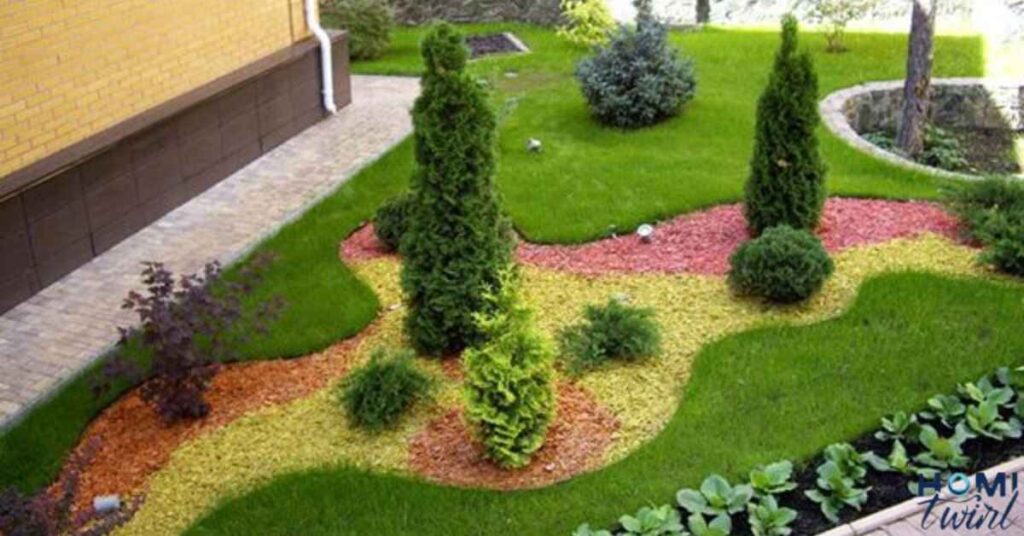
Understanding color can take your landscape design to the next level.
- Use the color wheel to create harmonious plant combinations
- Consider the psychology of color (e.g., cool colors for relaxation, warm colors for energy)
- Don’t forget about foliage color – it’s not all about flowers!
Here’s a quick color cheat sheet.
| Color Scheme | Effect | Example Combination |
| Monochromatic | Soothing, elegant | Various shades of purple flowers and foliage |
| Complementary | Vibrant, energetic | Orange marigolds with blue salvia |
| Analogous | Harmonious, natural | Yellow, orange, and red zinnias |
Four-Season Interest
A truly picture-perfect landscape looks great year-round. Here’s how to achieve it.
- Spring: Flowering bulbs and trees (e.g., tulips, cherry blossoms)
- Summer: Perennial flowers and lush foliage
- Fall: Trees and shrubs with colorful autumn foliage
- Winter: Evergreens, plants with interesting bark or structure, ornamental grasses
Don’t forget about hardships that shine in every season, like a well-designed patio or an eye-catching water feature.
Incorporating Water Features
Water can add a whole new dimension to your landscape:
- Sound: The soothing trickle of a fountain can mask urban noise
- Movement: Flowing water brings life to static elements
- Reflection: Still water can make your space feel larger and more serene
Options range from simple bird baths to elaborate koi ponds. Choose what fits your style and maintenance comfort level.
Lighting for Drama and Function
We touched on lighting earlier, but it’s worth emphasizing its transformative power.
- Use uplighting to highlight trees or architectural features
- Install path lighting for safety and to guide the eye through your landscape
- Consider color-changing LED lights for special occasions
Remember, less is often more with landscape lighting. You’re going for a moonlit glow, not a stadium effect.
The Role of Art in the Landscape
Don’t be afraid to incorporate art into your outdoor space.
- Sculptures can serve as focal points
- Colorful ceramic pots can add pops of color
- Wind chimes or kinetic sculptures can add movement and sound
Choose pieces that complement your overall design and can withstand outdoor conditions.
Case Study: The Johnson’s Backyard Transformation
Let’s look at how these principles came together for one family.
The Johnsons had a bland, unused backyard consisting of a patchy lawn and overgrown shrubs. By applying our landscaping tips, they created a stunning outdoor living space.
- They reduced lawn area and installed a permeable paver patio
- A pergola now defines a cozy seating area
- Native plants and a rain garden manage water runoff
- Solar-powered landscape lighting extends outdoor enjoyment into the evening
- A small vegetable garden adds functionality and fresh produce
The result? A beautiful, low-maintenance landscape that the family uses daily and that has significantly boosted their home’s value.
Maintaining Your Picture-Perfect Landscape
Remember, creating a beautiful landscape is just the beginning. To keep it picture-perfect.
- Stick to your maintenance schedule
- Address problems (like pests or diseases) promptly
- Be prepared to make changes as plants grow and your needs evolve
“The best time to plant a tree was 20 years ago. The second best time is now.” – Chinese Proverb
This wisdom applies to all aspects of landscaping. Don’t be discouraged if your yard isn’t perfect yet. Every positive change you make brings you closer to your dream landscape.
Frequently Asked Question
What are some key elements to consider when planning a landscape?
Proper assessment of yard size and shape, thoughtful plant selection, and integration of hardscaping elements like pathways and patios.
How can landscaping enhance the curb appeal of a home?
By creating visual harmony with the architecture, incorporating attractive plantings, and maintaining a well-kept appearance.
Why is sustainable landscaping important?
It reduces maintenance needs, supports local ecosystems with native plants, and conserves water resources.
What role does lighting play in landscape design?
Lighting enhances nighttime aesthetics, highlights focal points, and improves outdoor usability and safety.
How should one choose the right plants for their landscape?
Consider climate suitability, maintenance requirements, and aesthetic preferences to ensure long-term health and beauty.
What maintenance practices are essential for a picture-perfect landscape?
Regular watering, pruning, mulching, and seasonal care ensure plants thrive and the landscape maintains its appeal over time.
Conclusion
Achieving a picture-perfect home landscape requires a blend of creativity, practicality, and ongoing care. By following the tips outlined—from assessing your yard and selecting appropriate plants to integrating hardscaping and ensuring sustainable practices—you can create an outdoor space that not only enhances the beauty of your home but also adds value and enjoyment.
Thoughtful design that complements your home’s architecture and local environment, coupled with regular maintenance such as pruning and proper irrigation, will help sustain its allure throughout the seasons. Whether you’re starting from scratch or renovating an existing landscape, investing in these principles ensures your outdoor environment remains a source of pride and a welcoming haven for years to come.
